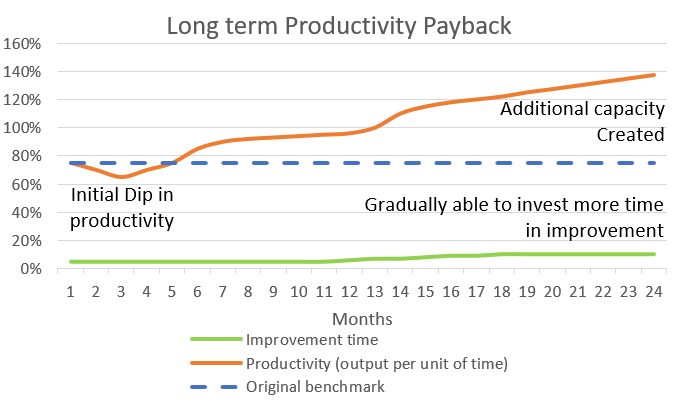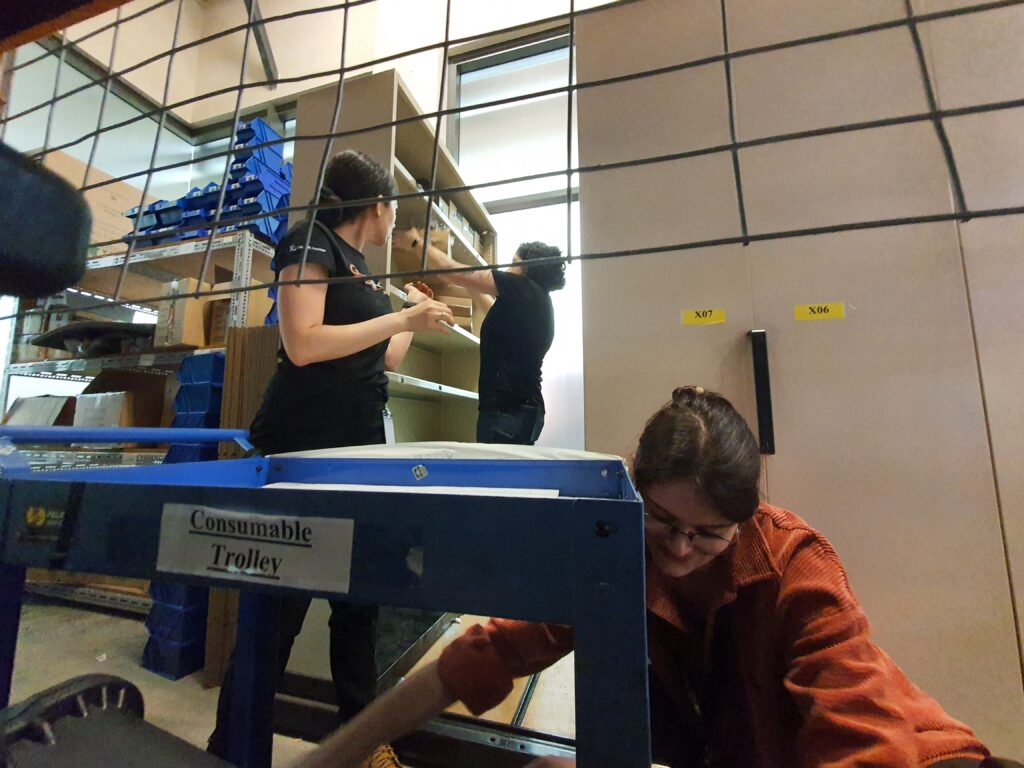Creating and Maintaining a Successful Continuous Improvement (CI) Strategy

 GroundProbe Senior Manager – Quality & Continuous Improvement, Neil Cordon
GroundProbe Senior Manager – Quality & Continuous Improvement, Neil Cordon
I am sharing my thoughts on the fundamental principles for creating and maintaining a successful Continuous Improvement (CI) strategy.
The following tips are based on my work experience at GroundProbe and 12 years as a ‘lean’ practitioner. Some have come from personal hard-learned lessons, while others are from benchmarking best practices to save the pain. The CI community supports benchmarking, so my first recommendation is to get out there and see how others have achieved success.
Over the years, I have visited many large organisations that have built multi-layered and multi-dimensional CI systems. Unfortunately, most of them complicate things, especially over long periods, as they add layers to systems and processes. Although they might look impressive, unfortunately, they end up losing sight of the original intent over time, making things incomprehensible to the uninitiated (e.g., new starters). As I gained experience building a CI journey for my team here at GroundProbe, I learned the importance of simplifying the CI message and staying faithful to the original intent. For me, as a team manager, there are three key ingredients:
- Listen and lead. Listen to your team, then lead them from the front, appreciating that a well-managed team dynamic can deliver output greater than the sum of its parts
- Develop a culture of leaders as ‘servants to the team’
- Time and resources: Understand that developing and delivering great ideas takes time.
Let’s explore these in more detail:
Listen and lead
Your team knows the job better than anyone else. Listen to their ideas
Without team input, you don’t have a CI system. Improvement ideas need to come from those who will be affected and who do the work. They intuitively know what’s wrong from the pain points and frustrations of the day. Enabling their voice and converting angst to opportunity is the spark that triggers the CI machine into life. Adding too much detail to visual boards and performance tracking can take the fun out of improvement and make the system impenetrable to those new to the journey.
Your team must feel they can freely express and try ideas without fear of judgement or failure
To encourage and reward new ideas, consider including CI in their peer review and reward for developing the concept rather than the idea’s success (PDCA Plan-Do-Check-Act). The PDCA process ensures that learning (often through failure) is built into the experience, gradually building personal confidence to take risks and know what works and doesn’t. How many ideas do you know that worked the first time? Encouragement builds resilience.
We are all primarily motivated by things that will benefit us
This doesn’t mean we are selfish; we are passionate about the things that mean the most to us. Often, these are pain points and frustrations, especially at the start of a team’s CI journey. Nobody wants to have a bad day at work; we all love the feeling when things go well and we have helped our co-workers succeed. The group recognition feels good. Ultimately, it’s the fuel that generates the improvement. Maslow’s hierarchy of needs explains the journey from basic human needs: survival, a sense of connection, respect, self-esteem, recognition, and freedom to self-actualisation (the desire to be the best that one can be). If we overlay this on how to motivate teams to work together on improvement, you have a proven recipe for success. Here is a point where we could make this very complex or very simple. Many CI systems define the expected behaviours as various maturity levels in finite detail. Everyone will naturally develop these behaviours if we embed our values into our CI processes.
Align your CI process to your business values
Don’t sweat the small stuff about specific behaviours. You can audit those as a measure of maturity later. But ensure your CI process message is consistent with business values and people-focused; then, the cultural enablers will be in place to grow the teams.
An example from GroundProbe:
- Safety is our priority always: Any ideas on improved safety are prioritised above all others
- Together we succeed: Our team engagement, collaboration on ideas, and reward/recognition scheme are at a team level, not an individual level (like a sports team)
- Respect and value all: Only constructive criticism is permitted when a team member presents their idea for peer review. Ridicule and other such disrespectful behaviours are called out against our values. We provide a safe space for all. No exceptions
- Integrity: We are all accountable for the same level of participation and contribution, and therefore, we can equally celebrate the reward
- Excellence: We each agree to commit 5% of our week (about 2 hours) to CI ideas supported by senior management in resourcing and capacity planning.
Support
CI only works with leadership support, a fundamental truth proven many times over. Businesses need their leadership team aligned with their CI strategy. In addition, a busy leadership team inexperienced in the teachings of ‘lean’ may need guidance and training in CI’s key principles.
To achieve success, leaders must:
Set the vision and direction first before providing the necessary resources
Providing vision and direction can mean anything from moral support to time, money, and resources. I believe leaders should ‘serve the needs of their team’ – sometimes an unpopular concept in some management circles but sustaining your CI journey will be hard if you don’t get this right.
Experience their daily reality
‘Gemba walks’ is a leadership support strategy for managers to experience what issues their team members face on a daily basis. It also helps to provide coaching opportunities for leaders to more easily and consistently model the behaviours the organisation seeks to reward. The effect of a bad interaction on a Gemba walk can be disastrous and long-lasting. Again, avoid complicated audits, measures, timetables, charts and reports. To get started, a simple guide to appropriate language is often enough. Examples:
- Would you please explain “x” to me?
- What do you recommend we do to fix this, and how can I help?
- How will others know what to do if you take a day off?
- Which team/who do you think I need to talk to make that happen?
To hold themselves accountable, leaders should ask themselves:
- What are we missing?
- How can we support cross-functional collaboration?
- Is there workplace suffering that we could reduce or eliminate?
Time and resources
We need to provide adequate time, training, and the right tools to visualize opportunities and work on pain points, frustrations, and complex issues.
Create a learning organisation
Delivering targeted training using the right tools at the right time is key to building resilience and excellence in your organisation. Your team will learn by doing, and in turn, they can teach others how to use those tools – this is far more powerful than just measuring maturity based on completed training modules.
Improvement is part of the job, not an add-on activity
Leadership must support employees in stepping away from the process to work on CI. Painful as this may be for productivity in the short term, remember we agreed to commit 5% of our week to work on the improvement of the other 95%. You will create additional capacity and reduce costs. Remember, keep it simple and keep it consistent.


– Neil
At GroundProbe we are a global team of innovators renowned for pushing boundaries and revolutionising the industry with cutting-edge technologies, pioneering thinking and innovative digital solutions that play a crucial role in safeguarding human lives and assets.




